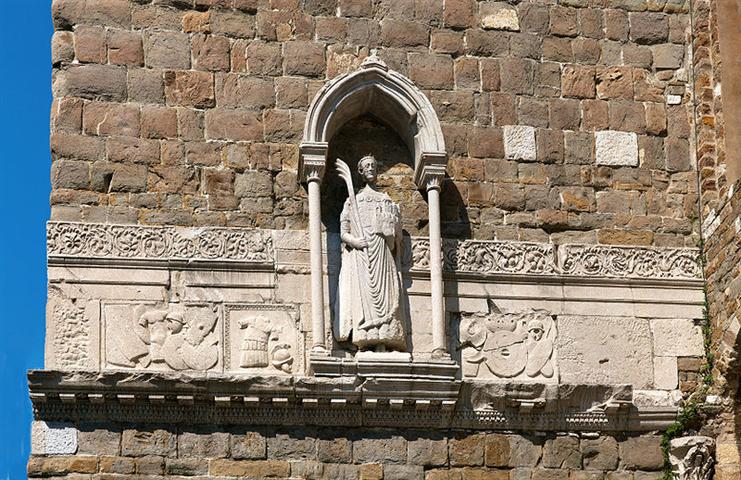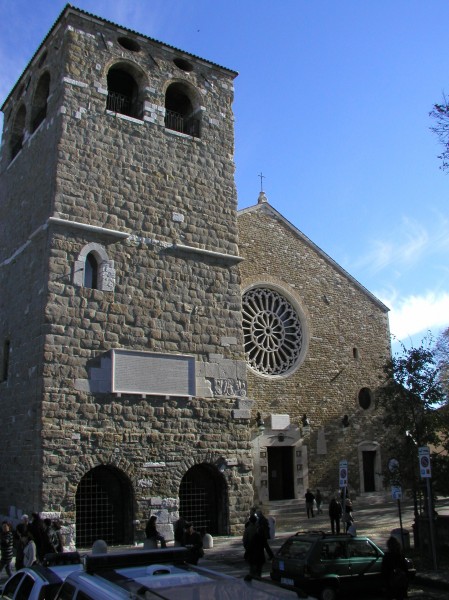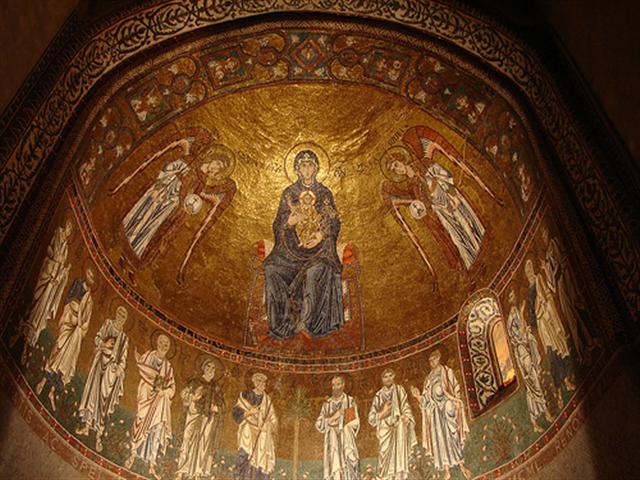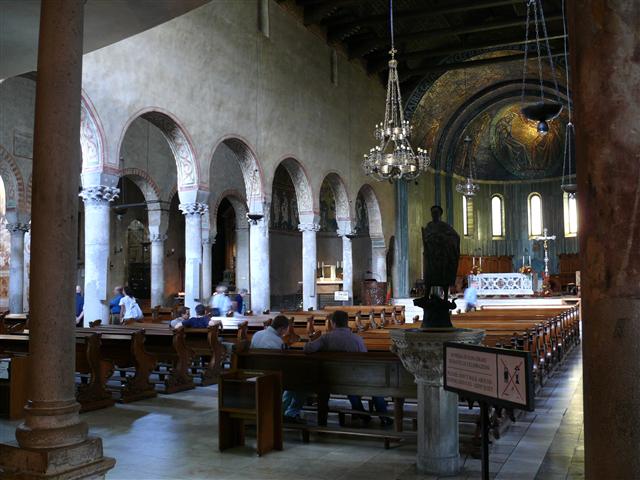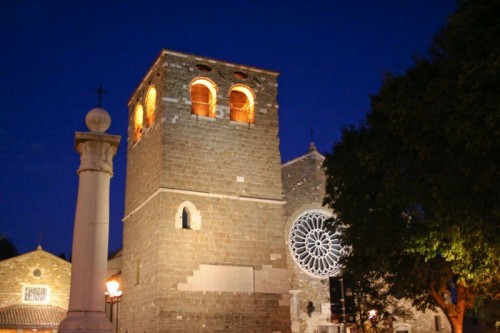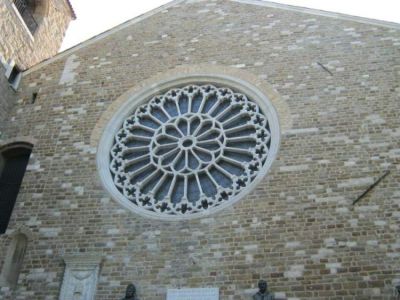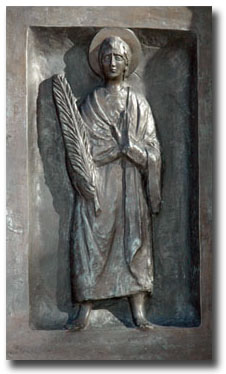cattedrale di San Giusto (1337)
colle di San Giusto
The Cathedral Basilica of San Giusto is the main Catholic religious building in the city of Trieste. It is located on the top of the homonymous hill overlooking the city.
As reported by most historians from Trieste, the current appearance of the cathedral derives from the unification of the two pre-existing churches of Santa Maria and that dedicated to the martyr San Giusto, which were incorporated under one roof by Bishop Roberto Pedrazzani from Robecco between the years 1302 and 1320, to provide the city with an imposing cathedral.
The first news about the cathedral dates back to the year 1337, when the bell tower of the former church of Santa Maria was covered with a thick wall to support the new building. The works on the bell tower ended in 1343, but those on the church went on practically until the end of the century. The bell tower was originally higher, but in 1422 it was struck by lightning and was reduced to its current height.
After the definitive dedication of the city to Austria (1382), the then emperor Leopold III appointed the first German bishop of Trieste, Enrico de Wildenstein, who on 27 November 1385 consecrated the main altar of the cathedral.
The austere facade of the church is enriched by a huge karst rose window, elaborated on site by master stonemasons hired in Soncino, near Cremona, whence the bishop came. A reminder of this remains in the denomination of the via dei Soncini in Trieste. Both the bell tower and the facade of the church are generously covered with finds from the Roman period, with which during the Enlightenment it was probably intended to soften the heaviness of the building. The entrance portal was for example obtained from an ancient funeral monument. The bronze busts, added in 1862 to the facade on shelves made from Roman pedestals, represent three illustrious bishops: Enea Silvio Piccolomini then Pope Pius II, Rinaldo Scarlicchio, discoverer of the relics revered in the cathedral, and humanist Andrea Rapicio of the sixteenth century.
There is not much data on the interior decoration of the church. In the year 1422 the apse was frescoed by two well-known Friulian artists, and remained so until 1843 when it was enlarged.
But in the first decades of the twentieth century it was demolished and rebuilt. The fresco with the Coronation of the Virgin was replaced with a mosaic that reproduces the same theme.
Of the other original frescoes, few finds remain, the most important of which is the five-part cycle of San Giusto, displayed in the side chapel.
The interior contains many of the sacred artifacts, including the Treasury, hidden behind a huge baroque grate, which still contains many priceless objects, although in 1984 it was heavily ransacked. However, controversial opinions exist on many of these objects, their difficult historical and geographical location being evident. Even for the symbol of the city, that is the halberd of San Sergio, secondary patron of the city, it is not possible to define a certain origin or the exact era of forging.
The two lateral apses (corresponding to those of the two sacellas of S. Maria and S. Giusto) are decorated with magnificent mosaics, the work of Venetian and Constantinopolitan workers.
The apse of S. Maria bears a splendid representation of the Theotokos, seated on a throne, on a gold background, with the Child in his arms, flanked by two corpulent angels. It is a superb execution of the Constantinopolitan matrix of the first half of the XII century, probably performed in parallel with the host of the Apostles on an idyllic lawn, located in the apse hemicycle below, framed in a decorated frame, which instead is due to the softness of the drapery and the affinities of the physiognomies of some figures with those of the Ursian Cathedral of Ravenna, to a team of Venetian mosaicists, the same trained in the school of Byzantine workers who decorated the basilica of San Marco in the last quarter of the 11th century. As in Santa Maria Assunta in Torcello, the apostles are represented in the Latin series, that is, with Giacomo minor and Taddeo in place of Marco and Luca.
In the right apse, instead, the enthroned Pantocrator stands out, flanked as in a Deesis by the saints Giusto and Servolo. The features of Christ, slender, severe and noble, place the drafting of this mosaic in the early thirteenth century, by the work of Byzantine mosaicists.




